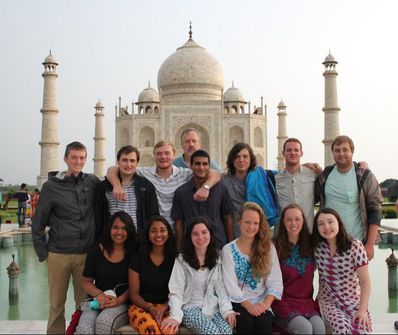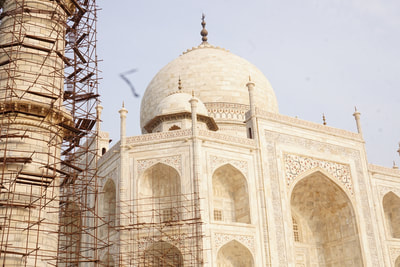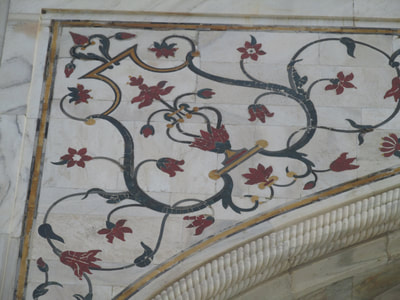Agra, India
Agra

You really can’t travel to India and not visit the Taj Mahal. Students spend two days in Agra to visit this wonder of the world and visit another segment of poverty, the developing village. Agra is another very old city with ancient buildings and artifacts, but their infrastructure does not have the capacity for the population and the amount of tourists who visit each day. The streets are congested and flood when it rains from backed up drainage systems, and there is a high level of air pollution. However, the monuments are very well taken care of in Agra.
The best time to visit the Taj Mahal is in the morning. Not only does it allow you to arrive before the daily deluge of tourists and beat the heat, but the white marble of the mausoleum glows pink in the morning light. The students met at 5:30am to visit the famous site.
After breakfast back in the hotel, there were tours to the Agra Fort and a demonstration of the techniques used to make the Taj Mahal. After lunch, there was the 3rd field visit to Barara, a developing village about an hour outside of Agra. This village prospers because family members commute to the city of Agra for work so they earn a city salary, but they still live in their village which means they have a village cost of living. This allows many of the families to pool their resources and have a higher standard of living than the farming or tribal villages. The students broke into groups and met with families. They also visited a local entrepreneur who runs a small water plant out of his home.
The best time to visit the Taj Mahal is in the morning. Not only does it allow you to arrive before the daily deluge of tourists and beat the heat, but the white marble of the mausoleum glows pink in the morning light. The students met at 5:30am to visit the famous site.
After breakfast back in the hotel, there were tours to the Agra Fort and a demonstration of the techniques used to make the Taj Mahal. After lunch, there was the 3rd field visit to Barara, a developing village about an hour outside of Agra. This village prospers because family members commute to the city of Agra for work so they earn a city salary, but they still live in their village which means they have a village cost of living. This allows many of the families to pool their resources and have a higher standard of living than the farming or tribal villages. The students broke into groups and met with families. They also visited a local entrepreneur who runs a small water plant out of his home.
Field Visits
In Agra, students have had the opportunity to visit the 3rd segment of rural poverty, a developing village.

















